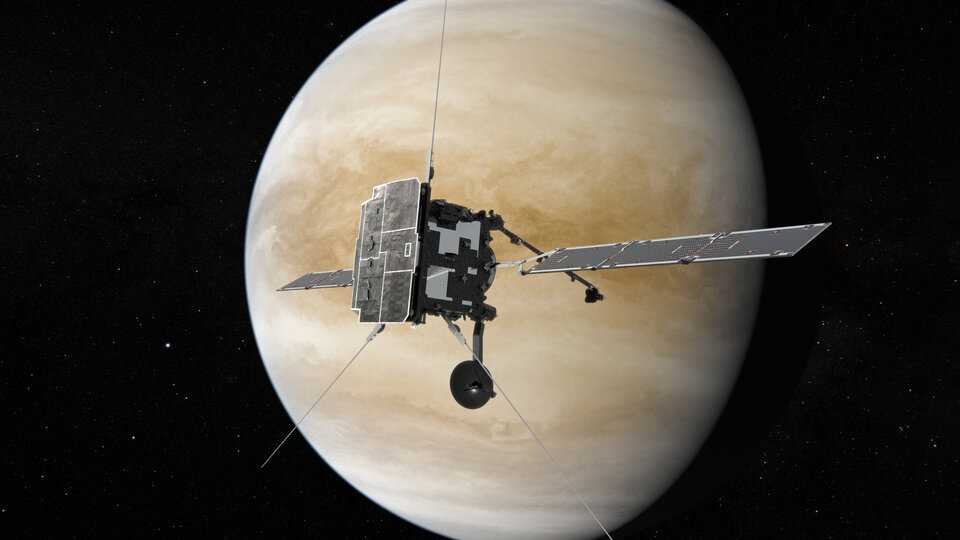Solar Orbiter perihelia and flybys
A summary of Solar Orbiter close approaches to the Sun (perihelia) and gravity assist flybys.
Perihelia
| Date | Distance from the Sun (AU) |
| 15 Jun 2020 | 0.52 |
| 10 Feb 2021 | 0.49 |
| 12 Sep 2021 | 0.59 |
| 26 Mar 2022 | 0.32 |
| 12 Oct 2022 | 0.29 |
| 10 Apr 2023 | 0.29 |
| 07 Oct 2023 | 0.29 |
| 04 Apr 2024 | 0.29 |
| 30 Sep 2024 | 0.29 |
| 31 Mar 2025 | 0.29 |
| 16 Sep 2025 | 0.29 |
| 03 Mar 2026 | 0.29 |
| 18 Aug 2026 | 0.29 |
| 06 Feb 2027 | 0.28 |
| 06 Jul 2027 | 0.28 |
| 03 Dec 2027 | 0.28 |
| 07 May 2028 | 0.33 |
| 04 Oct 2028 | 0.33 |
| 03 Mar 2029 | 0.33 |
| 11 Aug 2029 | 0.37 |
| 08 Jan 2030 | 0.37 |
| 06 Jun 2030 | 0.37 |
1 AU = 1 Astronomical Unit, or 150 million km, equivalent to the Earth-Sun separation.
Gravity assists

Earth
27 Nov 2021
Venus
27 Dec 2020
09 Aug 2021
04 Sep 2022
18 Feb 2025
24 Dec 2026
18 Mar 2028
10 Jun 2029
02 Sep 2030
Dates subject to change.
Click for related news items.
Increasing inclination
The first gravity assist flybys adjust Solar Orbiter’s trajectory in order to get it into the orbit required for its scientific tasks. Subsequent Venus flybys increase its inclination to see more of the solar poles. The February 2025 Venus encounter will increase the inclination of the spacecraft’s orbit from about 7.7 to around 17 degrees. The 24 December 2026 flyby will increase this still further to 24 degrees, and will mark the start of the ‘high-latitude’ mission. Additional flybys will boost the inclination to 33 degrees, giving even more direct views of the solar poles.
Follow Solar Orbiter's journey with our "Where is Solar Orbiter?" tool.








